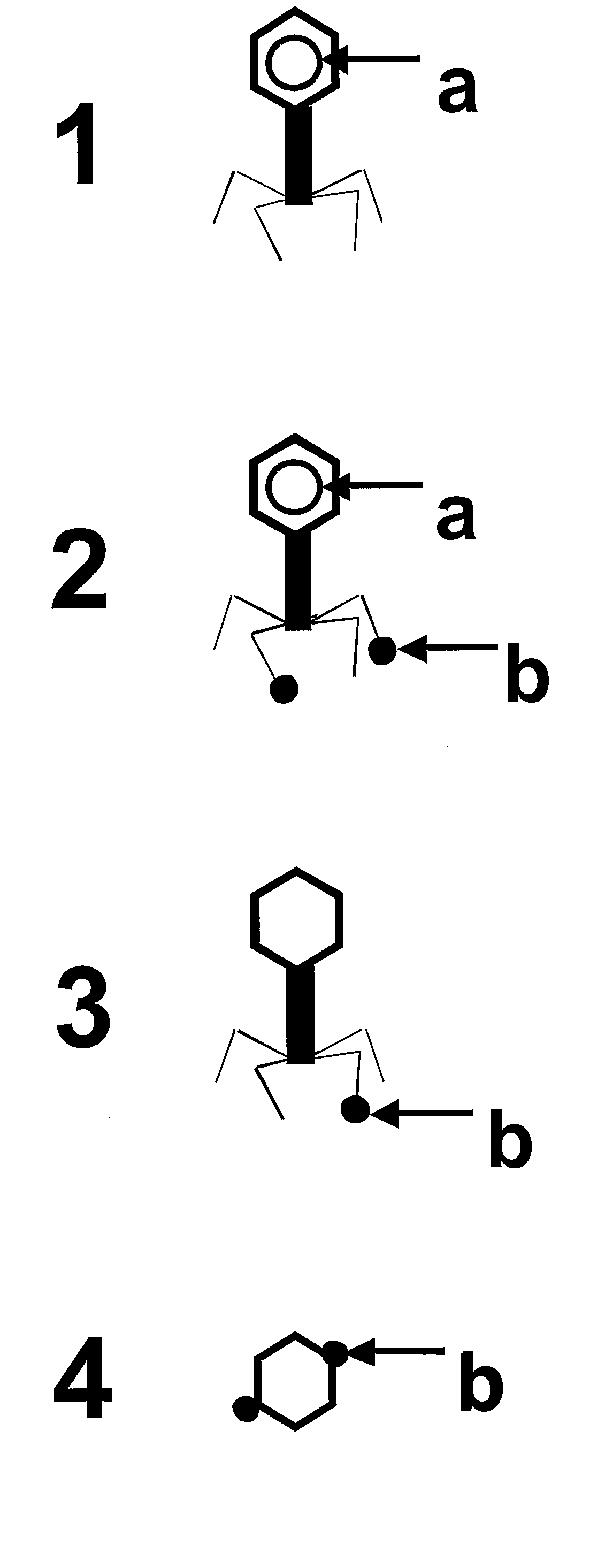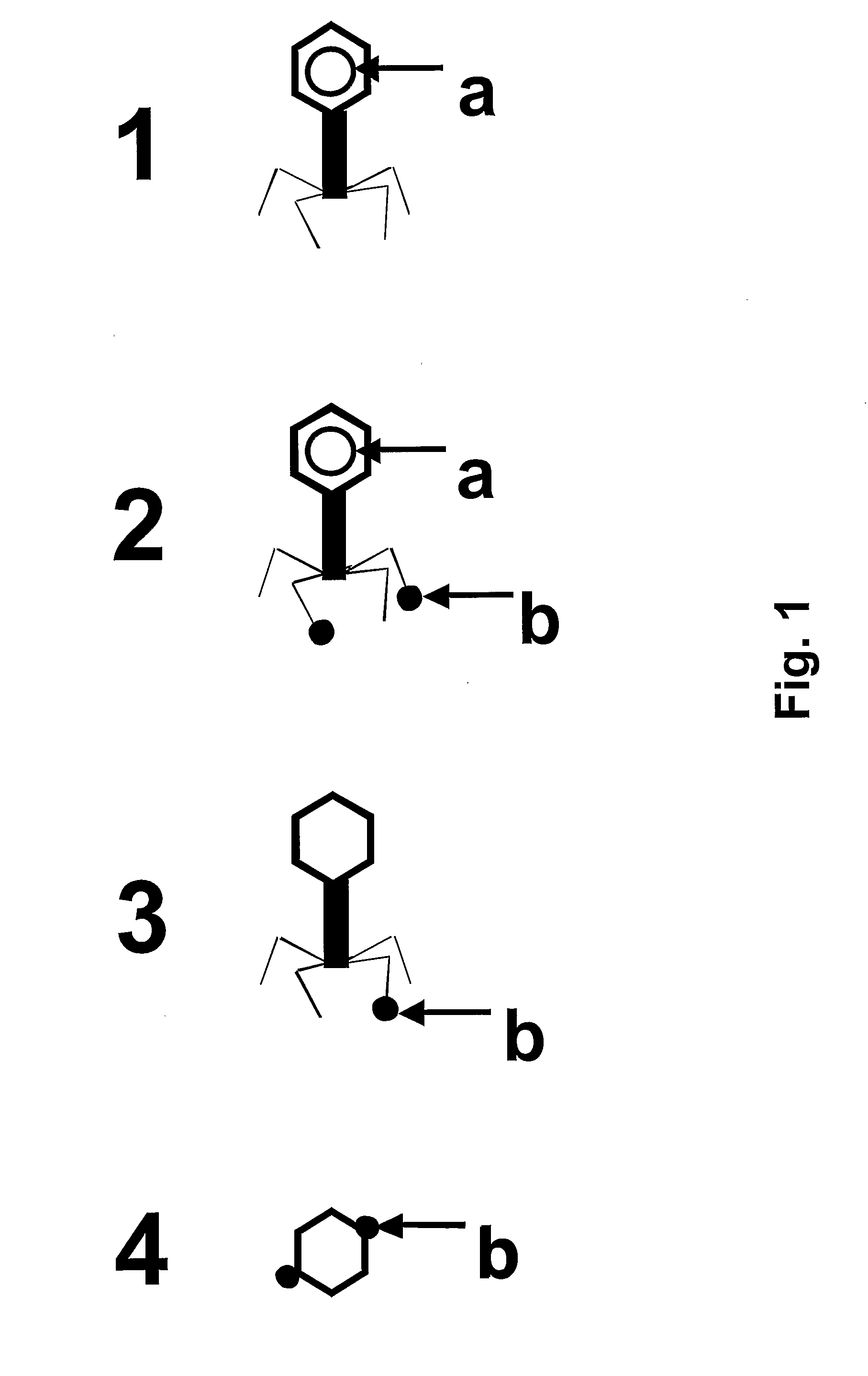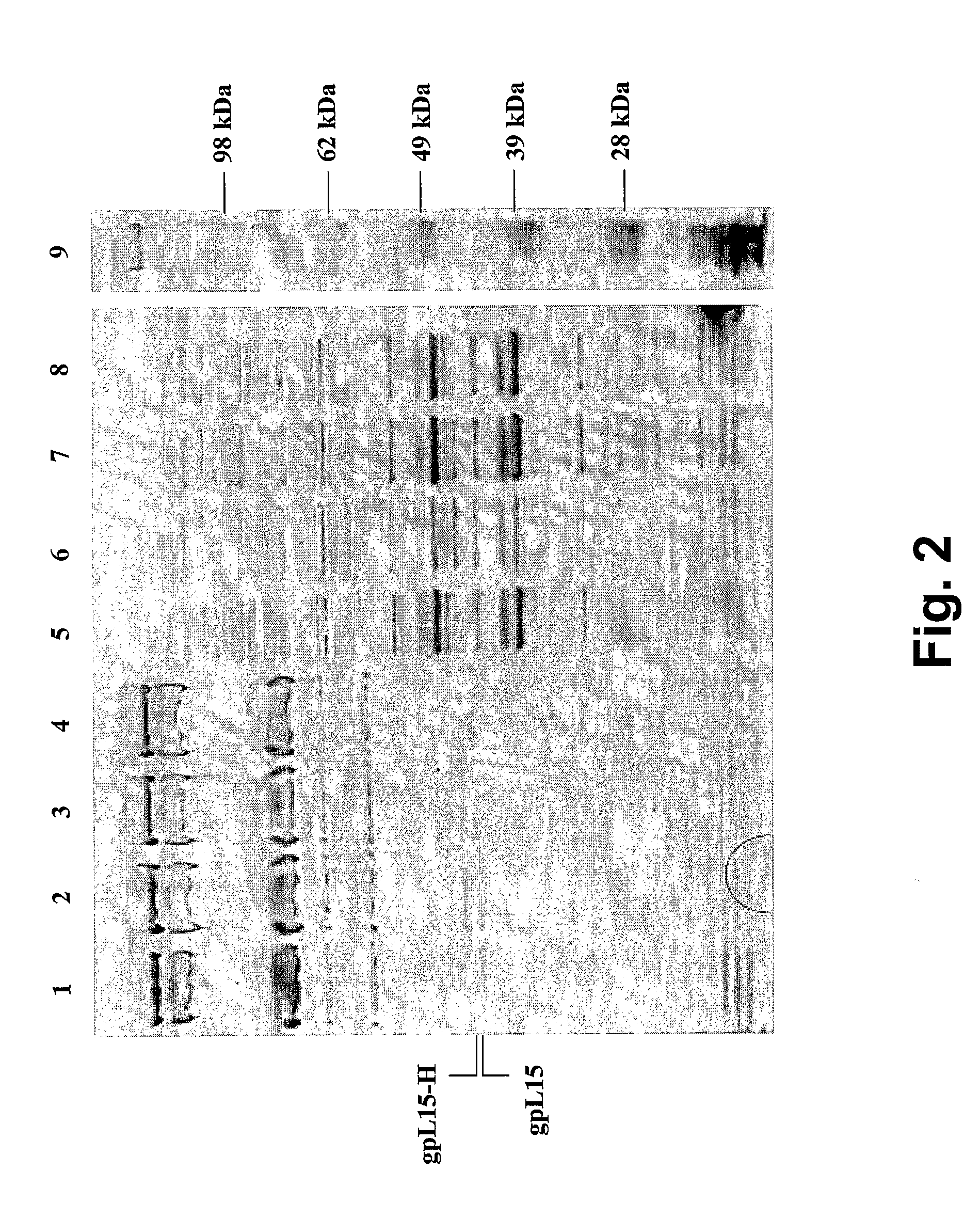Chimeric Bacteriophages, Chimeric Phage-Like Particles, and Chimeric Phage Ghost Particles, Methods for Their Production and Use
a technology of phage ghost particles and bacteriophages, which is applied in the direction of antibody medical ingredients, peptide sources, drug compositions, etc., can solve the problems of large immune system bypassing, adverse reactions and even serious adverse reactions, and live attenuated vaccine formulations carrying significant risks
- Summary
- Abstract
- Description
- Claims
- Application Information
AI Technical Summary
Benefits of technology
Problems solved by technology
Method used
Image
Examples
example 1
Construction of a Host Cells Suitable for the Constitutive Production of Chimeric Particles
[0144] Bacterial strains and growth conditions. All microbiological media were purchased from Becton, Dickinson & Company (Sparks, Md.). Unless otherwise indicated, all other reagents were of analytical grade and purchased from Sigma-Aldrich (St. Louis, Mo.). Escherichia coli strain MC1061 (Huynh et al., 1985) and One Shot® Top10 (Invitrogen, Carlsbad, Calif.) were propagated at 37° C. with aeration in Luria-Bertani broth. Lactococcus lactis subsp. cremoris strain MG1363 (Gasson, 1983) and derivatives thereof were propagated aerobically at 30° C. in M17 broth supplemented with 0.5% (w / v) glucose (M17-G). Phage c2 (φc2) and chimeric derivatives thereof were propagated in M17-G supplemented with 10 mM CaCl2 (M17-GC) at 30° C. on derivatives of MG1363. For the selection of recombinant E. coli, chloramphenicol (5 μg / mL) or erythromycin (100 μg / mL) were added to media, as appropriate. For the sele...
example 2
Production of Chimeric Phages
[0150] Precipitation and visualization of bacteriophages by SDS-PAGE. Mid-log cultures of L. lactis MG1363, MG1363 (pJMS245::I15) and two independent isolates of MG1363 (pJMS245::I15-H) were independently infected with wild-type 4c2 at a multiplicity of infection (MOI) of 0.1. The lytic infections were allowed to proceed until the culture was lysed completely. 500 mL phages lysates titered at >5×109 plaque-forming units (PFU) per mL were concentrated by polyethylene glycol (PEG) precipitation according to the method described by Sambrook et al. (1982). The concentrated phage lysates were subjected to SDS-PAGE under reducing conditions using Novex 4-12% Bis-Tris Gels (Invitrogen, Carlsbad, Calif.) in 1×MOPS buffer as described by the manufacturer. As a control, total proteins were also isolated from uninfected control cultures via bead beating.
[0151]FIG. 2 illustrates typical results obtained by SDS-PAGE. Total proteins were isolated from uninfected con...
example 3
Incorporation of the gpL15-H Antigen into Chimeric φc2 Particles Devoid of the gpL15-H Encoding Gene and Contiguous Plasmid DNA
[0153] Evaluation of plasmid transduction frequencies. Transduction studies were conducted as described by Birkeland and Holo (1993) in order to estimate the frequency with which the host-encoded plasmid, which encodes the antigenic recombinant fusion protein, is erroneously incorporated into phage particles (Table 2). MG1363 is naturally chloramphenicol sensitive, its frequency of spontaneous mutation to chloramphenicol resistance was found to be extremely low at a concentration of 5 μg / mL (−9). Sterile-filtered phages previously propagated on L. lactis MG1363 (pJMS245), MG1363 (pJMS245::I15) and MG1363 (pJMS245::I15-H) were incubated in the presence of MG1363 and the frequency in which MG1363 was converted to a chloramphenicol resistant phenotype was assayed. In all cases, no chloramphenicol resistant transductants were observed. These results suggest tha...
PUM
| Property | Measurement | Unit |
|---|---|---|
| concentration | aaaaa | aaaaa |
| pH | aaaaa | aaaaa |
| pH | aaaaa | aaaaa |
Abstract
Description
Claims
Application Information
 Login to View More
Login to View More - R&D
- Intellectual Property
- Life Sciences
- Materials
- Tech Scout
- Unparalleled Data Quality
- Higher Quality Content
- 60% Fewer Hallucinations
Browse by: Latest US Patents, China's latest patents, Technical Efficacy Thesaurus, Application Domain, Technology Topic, Popular Technical Reports.
© 2025 PatSnap. All rights reserved.Legal|Privacy policy|Modern Slavery Act Transparency Statement|Sitemap|About US| Contact US: help@patsnap.com



